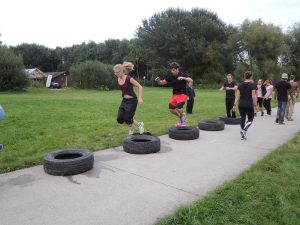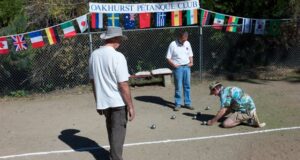 When I talk to my clients about exercise the first question they have is usually, “what type of exercise should I be doing?”
When I talk to my clients about exercise the first question they have is usually, “what type of exercise should I be doing?”
The answer is, “it depends.”
It depends on lots of things, such as what your goals are, what kind of physical condition you’re presently in and what your physical limitations are. Short bursts of high intensity workouts are all the rage at the moment and they certainly offer some benefit. Yet, given that most of my clients are on the north side of 50, I like to focus on cardiovascular fitness, because that has such positive effects on the brain.
We all know that the brain’s ability to process information, remember, and reason starts to decline with age. While this may be a “normal” part of aging, it’s not an absolute. There are some actions you can take to slow cognitive decline and even regain some of your mental faculties.
The research is pretty clear that cardiovascular exercise is the type of exercise that improves brain function best. Scientists did a study with rats, whose brains are apparently similar to humans. They tested three different types of exercise: cardio, weight training and short bursts of high intensity training.
The rats that grew the most new brain cells were those who ran on a wheel everyday.
 The rats who did weight training, with little weights tied to their tails while they climbed a wall, were stronger overall but had no positive changes to their brain cells. Those who engaged in short bursts of sprinting followed by a short rest and repeated for a total of 15 minutes saw very little improvement to their brain.
The rats who did weight training, with little weights tied to their tails while they climbed a wall, were stronger overall but had no positive changes to their brain cells. Those who engaged in short bursts of sprinting followed by a short rest and repeated for a total of 15 minutes saw very little improvement to their brain.
One of the most important pieces of this research is that these rats were considered “mature,” meaning they were the adult equivalent of middle to older age and, in spite of that, grew new brain cells!
Longer bouts of cardiovascular exercise are good for the brain partly because the practice causes less stress to the body in general, and the brain cannot grow easily when the body is experiencing stress. The hormone BDNF (brain derived neurotropic factor) is like Miracle Grow to brain cells.
If you want to think better, study better, and improve pretty much any aspect of brain activity you want to stimulate BDNF. The short bouts of high intensity exercise (think HIIT or Tabata) create so much stress in the body that BDNF takes a back seat to the stress hormones.
Instead, walking long distances or easy running stimulates the release of the BDNF, and your brain does the happy dance.
 For humans, the takeaway from this study is that long, easy-distance kinds of exercise are better for creating new brain cells. For example, running at an easy pace, long walks at a moderate pace, dancing, and biking for are all good ways to get some easy distance under your belt.
For humans, the takeaway from this study is that long, easy-distance kinds of exercise are better for creating new brain cells. For example, running at an easy pace, long walks at a moderate pace, dancing, and biking for are all good ways to get some easy distance under your belt.
The exercise you chose must stimulate the cardiovascular system, meaning your breathing increases but you’re not gasping for air. Keep in mind that the improvements in the brain increase in proportion to the amount of exercise you do. More is better, up to a point. When your body becomes stressed from too much exercise, the benefits diminish.
Start with 15 minutes if you don’t exercise regularly, and build to at least an hour. Dividing this up into manageable chunks is a good way to get 90 minutes of exercise into your schedule every day.
 I recommend that my clients exercise daily by mixing up long easy distance with yoga and Pilates, gardening, swimming, and other activities that work well for them. Don’t limit yourself to a single exercise class a few times a week, although that does have benefit.
I recommend that my clients exercise daily by mixing up long easy distance with yoga and Pilates, gardening, swimming, and other activities that work well for them. Don’t limit yourself to a single exercise class a few times a week, although that does have benefit.
If you want to grow new brain cells, get that Miracle Growing BDNF flowing everyday!
Virginia Eaton is a health and fitness coach helping people reorganize priorities.




